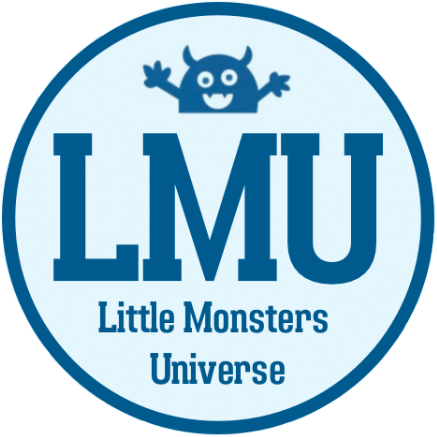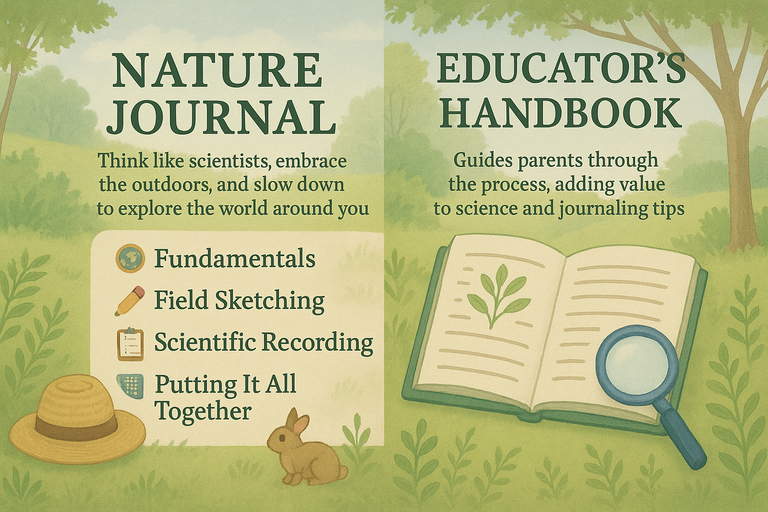As parents and educators, we want to inspire kids to connect with the natural world around them, fostering creativity, curiosity, and scientific thinking. One of the most powerful tools for this is nature journaling. But with so many terms floating around—Nature Journal, Nature Study Book, Nature Notebook—it can get confusing to know which is the best fit for your child’s learning style and your teaching approach. In this blog post, we’ll break down these terms to help you choose the right one for your child’s outdoor exploration.
📘Nature Journal
- Focus: Personal observations of nature, often including sketches, labels, and written reflections.
- Style: Freeform and creative; emphasizes the child’s own thinking and noticing.
- Common Features: Drawings, date/location, weather, short notes, questions, and sometimes poetry or feelings.
- Purpose: To record and reflect on real-world nature experiences and build observation skills.
🌿Nature Study Book
- Focus: Educational content about nature (like a curriculum or guidebook).
- Style: Often used by parents or educators to teach children about different nature topics.
- Common Features: Facts, lesson plans, suggested activities, vocabulary, or reading lists.
- Purpose: To guide and structure a child’s learning about the natural world.
📝Nature Notebook
- Focus: Very similar to a nature journal; often another name for it.
- Style: Can be slightly more structured or academic than a “journal,” depending on the context.
- Common Features: Observations, drawings, data, charts, vocabulary.
- Purpose: To record nature findings; might look more like a science notebook in some settings.
So, Which One Should You Choose?
What you choose ultimately comes down to personal preference or the specific goals you have in mind for your child’s learning and their personal learning style.
- Nature Journals are perfect for kids who thrive in creative, open-ended environments where they can observe, sketch, and reflect in their own way. This approach is all about exploration and thinking like a scientist in a fun, imaginative way.
- Nature Study Books are great for educators or parents who want to provide a structured, educational guide to help children learn about specific aspects of nature. These books are packed with facts, activities, and suggestions to support deeper learning.
- Nature Notebooks offer a middle ground, focusing on structured observation and data recording. This can be great for kids who enjoy a more organized approach to documenting their nature findings, especially for those with an interest in science.
Little Monsters Universe Nature Journal (Child’s Journal)
Best described as a: Nature Journal
Also fits the description of a: Nature Notebook (in a more gently guided, open-ended sense)
The Little Monsters Universe Nature Journal offers more personal freedom and reflection compared to a traditional nature notebook. While it provides some gentle guidance, it encourages creativity and allows children to explore, think, and reflect in their own unique way.
How it fits:
- Purpose: Encourages children to observe, sketch, record, and reflect on their experiences in nature, blending creative exploration with scientific practices.
- Style: Child-friendly, gently guided, with space for creativity, thinking like a scientist, and developing field sketching and observation skills.
- Structure: Broken into four thoughtfully sequenced sections:
- Nature journaling fundamentals
- Field sketching skills
- Recording scientific information
- Putting it all together
- Key Features: Includes 40 activities, sketching prompts, and space for free journaling.
- What sets it apart: It blends creative exploration with scientific practices, making it more than just an art or writing journal.
Nature Journal Educator’s Handbook
Best described as a: Nature Study Book
How it fits:
- Purpose: Serves as a guide for parents and educators to teach and support children’s nature journaling in a structured yet flexible way.
- Style: Structured, intentional, and supportive; with just enough guidance to make nature journaling feel doable and rewarding.
- Contents Include:
- Background info on scientific thinking and nature journaling
- Tips for observation, questioning, and guiding children
- Book recommendations
- Suggestions for extending activities or adapting for different ages
- What sets it apart: It bridges science education and child-led exploration, helping adults confidently nurture curiosity and thinking skills outdoors.
Final Thoughts
Whether you choose a Nature Journal, Nature Study Book, or Nature Notebook depends on your child’s personality, learning style, and your educational goals. If you want to encourage creative exploration and develop scientific thinking, a Nature Journal may be the perfect fit. If you’re looking for more structure and guidance in teaching, a Nature Study Book is ideal. And if your child enjoys recording nature in a more organized and scientific way, a Nature Notebook could be the perfect tool. Whatever you choose, the most important thing is to foster a love of nature and curiosity that will last a lifetime!



